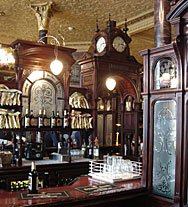Gay & Son
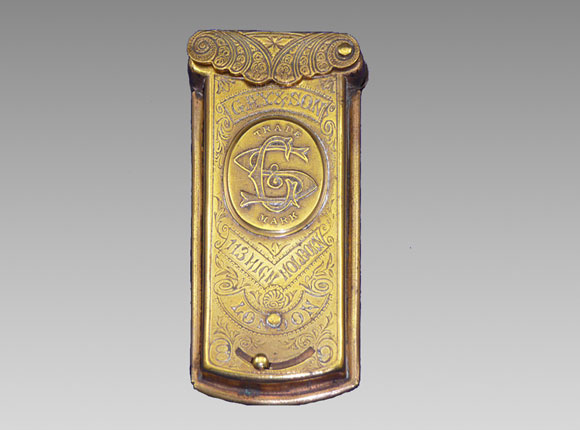
Needle Case (photographs courtesy of Lynda Herrod)
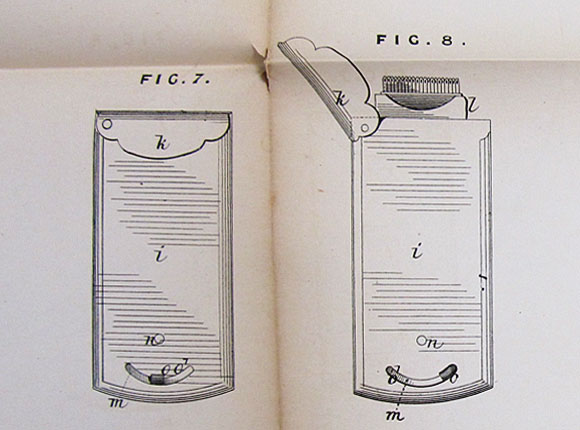
UK Patent 1868-3517 drawing
Design Details
Needle Case Type: |
Quadruple |
Patent/Registered to: |
William Avery, Redditch Needle Manufacturer and Albert Fenton of the same place, Machinist |
Patent/Design Representation #: |
Mechanical Patent: #3517 |
Patent/Design Registration Date: |
November 19, 1868 |
Location of Patent/Design Registration: |
British Library - Business and Intellectual Property Centre – London |
Reference #: |
1868-3517, Figures 7-10 |
Dimensions: |
3.3 x 7 |
Material: |
Brass |
Name Variations: |
Gay & Son - London |
Other Variations: |
See other Quadruples |
US Patent |
US 1870-98904 |
Additional Photographs
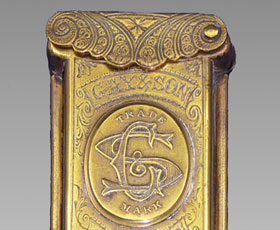
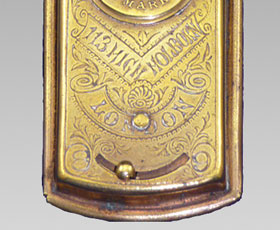
Detail views
Facts
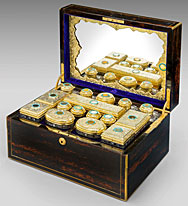
Gay & Son of 113 High Holborn Street in London was a Victorian company that specialized in dressing cases. At the time a dressing case
was a small piece of luggage used to carry brushes, bottles and other toiletries or personal care items needed by someone who traveled.
Originally dressing cases were designed for upper class men, as travel was considered inappropriate for women. However, by the Victorian Era,
with the emerging middle class, there was a greater need for such items as by then both men and woman enjoyed travel.
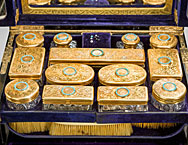
History
Instituting the use of surnames was a way to identify individuals or related groups. Before record keeping began, most people had only one
name such as John, however as the population increased it became necessary to distinguish between individuals with the same name. The problem
was solved by adding descriptive information based on one of the following characteristic: patronymic (named after a parent), occupational (based on
the person occupation), geographic (based on the place where the person was from) or a nickname based on a physical attribute. As a result
John became John Hunter, John Erickson, John Glasgow or John Cameron (means hook nose in Gaelic).
Gay is surname with two possible origins, both introduced to England by the French Normans after the Conquest of 1066. The first was a nickname
for a lighthearted, joyful or cheerful person, from the Old French word “gai”. The other possible origin is based on location as there are
several places in Normandy called “Gaye”. Although the Gay coat of arms is pictured below, there is no evidence to suggest it is related to
the Gay & Son firm mentioned on this page.
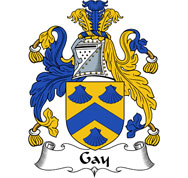
Miscellaneous
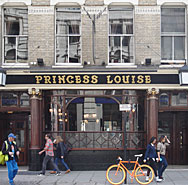
208 High Holborn
Today the Prince Louise Pub is one of the oldest buildings on High Holborn Street in central London near the place where Gay & Son had their
shop during the 19th century. Pub is a nickname for a “public house”, a house open to the public as a drinking establishment as opposed to a
private house. The Prince Louise Pub was originally built in 1872 and is best known for its well preserved Victorian interior which dates to
1891 providing visitors with the opportunity to step back into the 19th century. In 2011 it was listed as one of the 10 best pubs in London.
